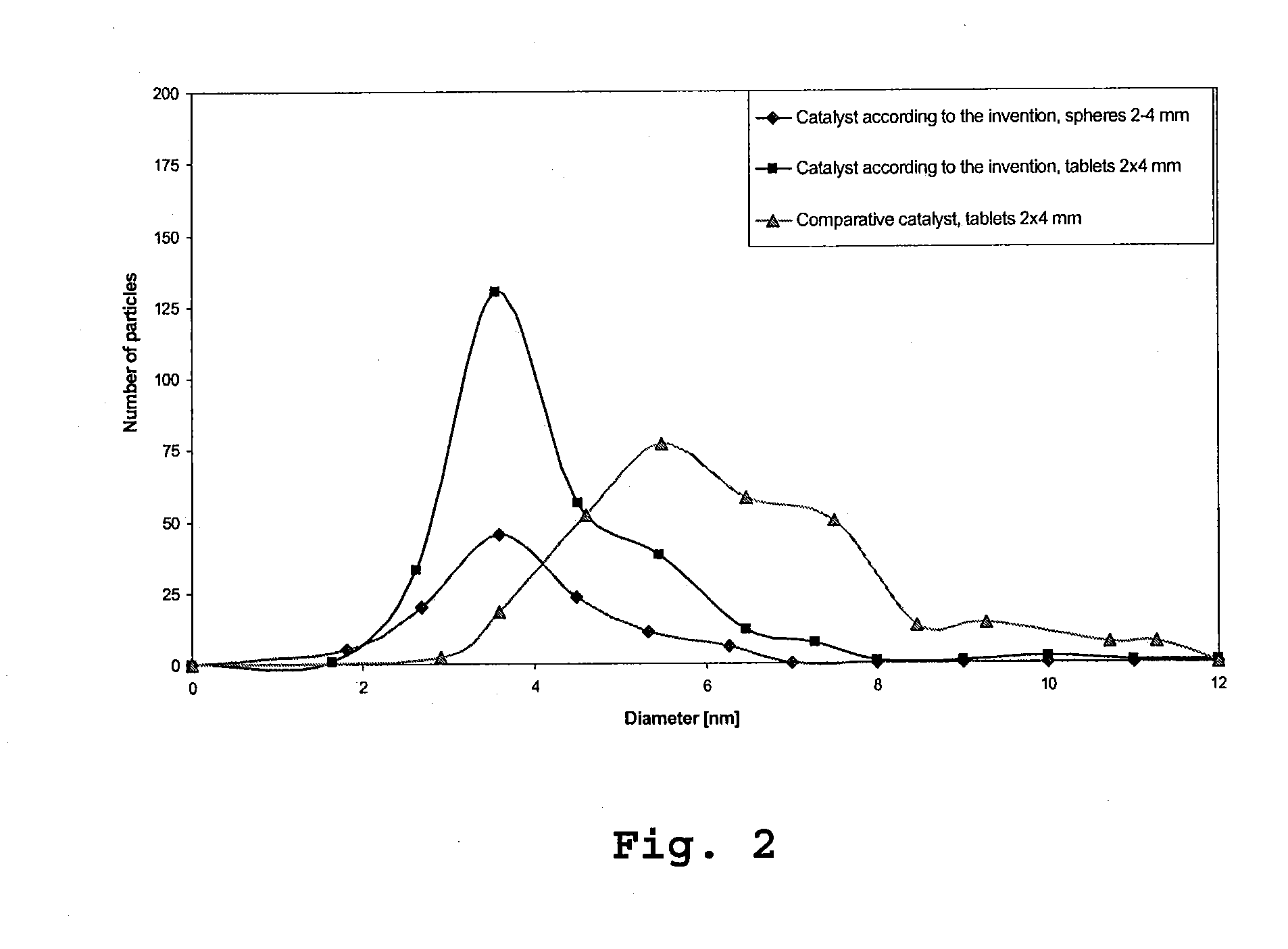Catalyst For The Selective Hydrogenation Of Acetylenic Hydrocarbons And Method For Producing Said Catalyst
a technology of acetylenic hydrocarbons and catalysts, which is applied in the direction of organic compounds/hydrides/coordination complex catalysts, physical/chemical process catalysts, bulk chemical production, etc., can solve the problems of decreasing the conversion and selectivity of catalytic hydrogenation, the temperature range between “clean-up temperature” and “runaway temperature” also shrinks, and the activity is high. , the effect of reducing the tendency to form by-products
- Summary
- Abstract
- Description
- Claims
- Application Information
AI Technical Summary
Benefits of technology
Problems solved by technology
Method used
Image
Examples
Embodiment Construction
1. Methods of Examination
1.1. Determination of the Size Distribution of the Particles of The Active Material
[0076]The determination of the particle size distribution is carried out by means of transmission electron microscopy (TEM). The samples are firstly reduced. For this purpose, a sample of the catalyst in its oxidic form is heated at 80° C. under helium (100 ml / min) and dried for 30 minutes. The sample is then reduced at this temperature in a stream of hydrogen (10 ml / min) for one hour. The samples obtained in this way are transferred directly into the electron microscope. For this purpose, the samples are treated with ultrasound and detached particles are collected on a grid. 7 images are employed in each case for particle analysis. Depending on the contrast difference between the particles of the active material and the support material, the images are enhanced by means of commercial image processing software. This has no influence on the number and size of the particles. The...
PUM
| Property | Measurement | Unit |
|---|---|---|
| Temperature | aaaaa | aaaaa |
| Fraction | aaaaa | aaaaa |
| Percent by mass | aaaaa | aaaaa |
Abstract
Description
Claims
Application Information
 Login to View More
Login to View More - R&D
- Intellectual Property
- Life Sciences
- Materials
- Tech Scout
- Unparalleled Data Quality
- Higher Quality Content
- 60% Fewer Hallucinations
Browse by: Latest US Patents, China's latest patents, Technical Efficacy Thesaurus, Application Domain, Technology Topic, Popular Technical Reports.
© 2025 PatSnap. All rights reserved.Legal|Privacy policy|Modern Slavery Act Transparency Statement|Sitemap|About US| Contact US: help@patsnap.com



